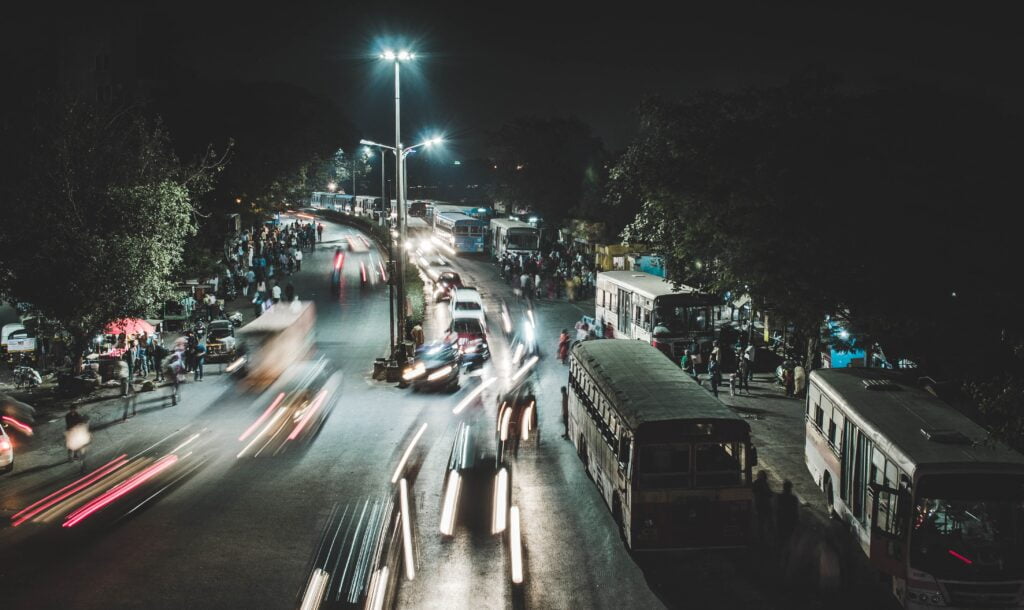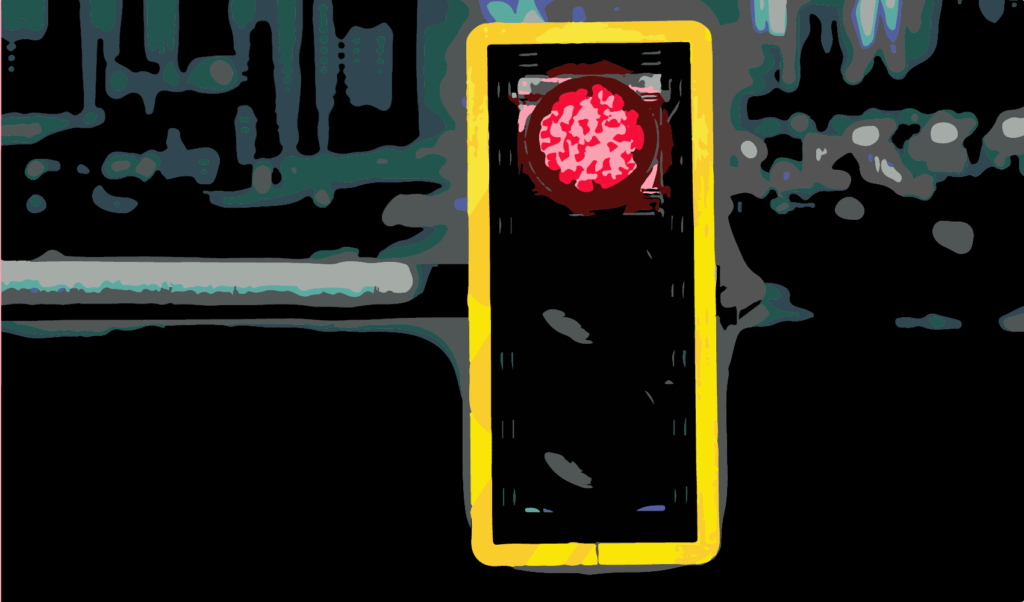Lack of institutional capacity and poor road design increases road accidents in India.
 India’s roads offer some unique challenges. : Photo by Atharva Tulsi on Unsplash Unsplash licence
India’s roads offer some unique challenges. : Photo by Atharva Tulsi on Unsplash Unsplash licence
Lack of institutional capacity and poor road design increases road accidents in India.
Road traffic deaths in India, down during the pandemic, are back with a vengeance. In 2021 traffic mishaps claimed an average 421 lives a day, back on the steady upwards trajectory seen before COVID-19 lockdowns.
It’s a cruel irony in India that the states with better road infrastructure, including Tamil Nadu, Karnataka, Kerala and Maharashtra, have higher rates of fatalities. India has much work to do if it is to meet the UN Sustainable Development Goal of reducing road accident deaths by 50 percent by 2030. Starting with road improvements based on evidence relevant to India.
Traffic accident patterns in India are substantially different from those of North America and Western Europe.
A majority (70 percent) of those killed on highways in India comprise vulnerable road users (pedestrians, cyclists and motorised two-wheeler riders). This is similar to urban areas where the vulnerable road users comprise about 80 percent of the total fatalities.
In North America, just 10 percent of the fatal crashes on highways involve pedestrians. The presence of motorcycles is negligible and long stretches of roads pass through wilderness. A large proportion of the highways are access controlled and designed for four-wheeled motorised traffic.
In India, the highest rates of fatal crashes are on national highways, nearly twice that of state highways. Despite the efforts of the national and state governments in the last few decades, the number of road traffic fatalities has continued to increase. The rate of traffic deaths of 12 per 100,000 population has remained nearly unchanged since 2016. It has not come down unlike many other countries. More than two thirds (68 percent) of road deaths take place in rural areas, versus 32 percent in urban areas.
Though the motor vehicle occupant fatalities are higher on highways than in the urban areas, as would be expected, the victim profile of road traffic accidents in the urban and rural areas are similar. This is very different from high-income countries.
The proportion of vulnerable road deaths on rural highways continues to be high in India because many sections of its national and state highways pass through densely-populated areas where local residents have to walk along these roads, cross them, or wait on the shoulders for public transport.
Roads have become relatively safe in many high-income countries mostly due to improved standards. Appropriate legislation regarding seat-belt use, speed limits and alcohol control have helped. Many high-income countries have accepted the principle of designing ‘forgiving’ roads: drivers who make mistakes should not get into fatal or serious injury crashes.
These design standards are also applicable to India’s high-speed roads, but safety audits of many recently built highways and expressways have found major shortcomings in the installation of appropriate crash barriers, median designs, inadequate signage and markings. This has resulted in increased risk for cars, buses and trucks even on India’s newly constructed highways.
The road standards that have evolved to make access-controlled highways safe for motorised vehicles in many countries don’t really apply in India because of the presence of pedestrians, bicycles and motorcycles on Indian highways.
Road standards set by Indian Roads Congress are based on committees where the membership includes practicing and retired professionals and academics. The Congress does not have a rigorous process of synthesising results of systematic reviews and scientific studies to propose or modify standards and monitor the impact of new standards.
Legislation changes made in 2019, such as increased penalties for driving offences and increased compensation for road victims, seem to be based on common sense rather than scientific evidence, and therefore are not likely to have a serious impact on reducing crashes. For example, there is no hard evidence of the impact of increased fines on compliance.
Experts have known for a long time that the chances of survival of a pedestrian at an impact speed of 30km/h is 90 percent, whereas it is 10 percent at 60km/h. Speed limits on roads where pedestrians and other vulnerable road users are present of below 30km/h would save lives. Separate lanes could be created for vulnerable road users if the speed limit is higher than 30 km/h.
At present India has weak institutional capacity and weak enforcement of legislation. Therefore, speed control by changing the road surface texture, audible markers, rumble strips, lowering speeds at intersections by introducing roundabouts, raised stop lines and speed humps on minor roads are likely to be more successful in speed compliance by all road users.
Road safety issues in India could be addressed at two levels. First, the known standards for high-speed roads could be implemented correctly to ensure reduced risk for four-wheeled vehicles. This requires careful installation of crash barriers, removing roadside hazards and appropriate median design in divided roads. On rural roads, extensive implementation of traffic calming measures could aid speed control.
Second, road standards to ensure the safety of vulnerable road users on highways could evolve through continuous monitoring and evaluation of traffic crash patterns. Many new technologies installed by the National Highway Authority of India — for example, speed cameras — are yet to be evaluated for their effectiveness in Indian traffic.
Most importantly, road safety could be understood as a science and, therefore, the policies, standards and adoption of new technologies could be based on hard evidence and informed by a road safety/traffic safety board with permanent road safety experts and a dedicated budget.
Professor Geetam Tiwari is the TRIPP Chair Professor at the Department of Civil Engineering of the Indian Institute of Technology in New Delhi.
Originally published under Creative Commons by 360info™.











